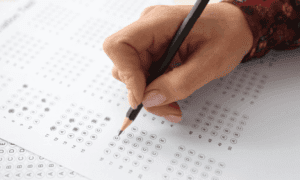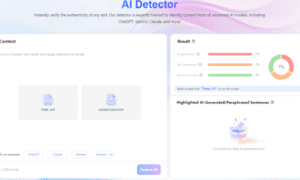Kindergarten—known in Chinese as 幼稚園—marks a child’s first structured encounter with education outside the family. Far more than a place for songs and naps, kindergarten environments ignite curiosity, cultivate social skills, and establish the emotional security that underpins future academic success. Around the world, policymakers and researchers agree that high-quality early-childhood education produces long-lasting benefits, from higher literacy rates to improved mental health. This article explores the history, pedagogy, and future directions of 幼稚園, offering insight into why the kindergarten years are arguably the most influential in a learner’s life.
For an inspiring example of holistic early-childhood practice, visit 幼稚園.
A Brief Historical Perspective
The term “kindergarten” was coined by German educator Friedrich Fröbel in 1837, combining the words “children” and “garden” to evoke a nurturing place where young minds could grow naturally. In Asia, the first modern kindergartens emerged around the turn of the 20th century, influenced by Western missionaries and educational reformers. By the 1970s, governments in Japan, Hong Kong, and Singapore had adopted large-scale early-education initiatives, recognizing their role in workforce development and social cohesion. Today, universal or near-universal kindergarten attendance is the norm in many regions, supported by public funding and rigorous teacher-training programs.
Developmental Milestones and Brain Science
A child’s brain forms over one million neural connections every second during the preschool years. These connections lay the groundwork for language, executive function, and emotional regulation. Kindergarten programs that integrate sensory play, storytelling, and movement strengthen these neural pathways. For instance, rhythmic clapping games improve auditory processing, while building block structures enhances spatial reasoning. Moreover, positive relationships with educators buffer stress and foster resilience, creating a secure attachment model that children carry into primary school.
The Holistic Curriculum
Play-Based Learning
Decades of research confirm that play is the primary vehicle through which young children learn. High-quality kindergartens balance guided activities—such as science explorations of plant growth—with open-ended play zones for dramatic role-play or block construction. This approach nurtures creativity, problem-solving, and negotiating skills.
Language and Literacy
Early literacy in 幼稚園 is less about drilling phonics and more about cultivating a love of stories. Daily read-aloud sessions, puppet theaters, and print-rich classrooms immerse children in the rhythms of language, laying a foundation for later decoding skills. Multilingual settings often expose children to English, Mandarin, and the local dialect, reinforcing phonemic awareness across languages.
Numeracy and Logical Thinking
Counting songs, cooking projects, and pattern games introduce mathematical concepts organically. Rather than worksheets, children sort natural objects by size, measure ingredients for play-dough, and use number lines chalked onto the playground. These tactile experiences translate abstract numbers into concrete understanding.
Social-Emotional Learning (SEL)
Circle time discussions and puppet scenarios teach empathy, turn-taking, and emotion labeling. Many kindergartens adopt evidence-based SEL frameworks that train children to recognize triggers, breathe through frustrations, and articulate needs—skills that directly correlate with improved academic outcomes and relationships.
Bilingual and Multicultural Contexts
Global migration and economic integration have turned many kindergartens into microcosms of the world. Dual-language programs—English-Mandarin in Hong Kong, English-Japanese in Tokyo—leverage children’s natural capacity for language absorption. Songs, cultural festivals, and storytelling from multiple traditions foster respect and curiosity about diversity from an early age.
The Role of Parents and Caregivers
Research shows that when parents engage in daily reading, open-ended questioning, and collaborative problem-solving at home, children’s vocabulary and executive function flourish. Successful kindergartens maintain regular communication channels—digital portfolios, parent-teacher conferences, and family workshops—to align home and school environments. Some host monthly “stay-and-play” mornings, allowing caregivers to observe learning in action and replicate best practices at home.
Health, Nutrition, and Safety
Well-designed 幼稚園 campuses incorporate outdoor play spaces, natural lighting, and child-sized furnishings, supporting gross-motor development and reducing injury. Nutritious meal programs introduce balanced diets rich in whole grains, lean proteins, and seasonal produce. Regular health screenings, dental checks, and vision tests catch issues early, ensuring that no preventable medical barrier impedes learning.
Measuring Quality Without Killing Joy
While accountability is necessary, experts caution against imposing standardized tests on four- and five-year-olds. Alternative assessment methods—teacher observations, developmental checklists, and portfolios—provide nuanced insights into growth without hampering the intrinsic motivation to explore. Governments increasingly use program-quality rating scales that evaluate classroom interactions, learning materials, and family engagement rather than drilling children.
Future Trends in Kindergarten Education
STEAM in Early Childhood
Science, Technology, Engineering, Arts, and Mathematics (STEAM) is migrating down the age ladder. Simple robotics kits and coding toys allow kindergartners to sequence commands, fostering computational thinking. Crucially, the “A” in STEAM keeps creativity at the forefront, ensuring that technological fluency evolves hand-in-hand with artistic expression.
Nature-Based and Forest Kindergartens
Outdoor programs that operate in parks or natural reserves are gaining popularity. Rain or shine, children explore flora, fauna, and seasonal cycles, strengthening immune systems and ecological literacy. Studies link frequent nature exposure with reduced ADHD symptoms and heightened problem-solving stamina.
Inclusive Education
More kindergartens are adopting Universal Design for Learning (UDL) to accommodate diverse physical, cognitive, and linguistic abilities. Sensory corners, visual schedules, and assistive communication devices allow every child to participate fully, teaching classmates empathy and collaborative problem-solving.
Mindfulness and Well-Being
Mind-body practices—guided breathing, yoga for kids, and gratitude circles—help young learners self-regulate and manage anxiety. As mental-health concerns rise, equipping children with mindfulness skills becomes as essential as teaching the alphabet.
Conclusion
Kindergarten is not merely a preparatory stage for “real” learning; it is the crucible in which curiosity, confidence, and compassion take shape. By honoring children’s developmental rhythms, integrating play with purposeful instruction, and forging strong school-family partnerships, 幼稚園 programs set the stage for academic success and holistic well-being. As research deepens and practices evolve—embracing STEAM, nature immersion, and inclusivity—the core mission remains unchanged: to nurture happy, resilient learners who will thrive in an uncertain but opportunity-filled world.



































